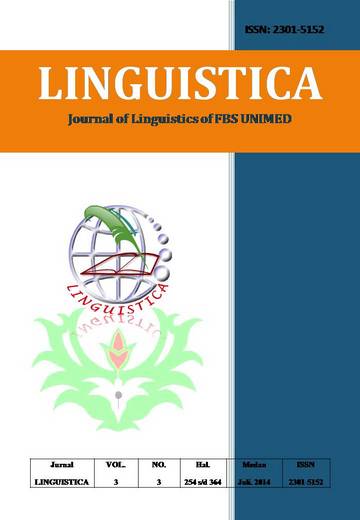REALIZATION OF SPEECH FUNCTION IN CIGARETTE™S SLOGANS
DOI:
https://doi.org/10.24114/jalu.v3i3.1808Abstract
ABSTRACT This study deals with realization of speech function in cigarette™s slogans. The objectives of the study were to identify the types of speech function realized in cigarette™s slogans, to identify the types of mood realized in cigarette™s slogans, and to find the most dominant type of speech function and mood in cigarette™s slogans. The data were cigarette™s slogans which were taken from advertising media like television, internet or billboard. There were found 38 slogans which consist of Speech Functions. Based on the analysis, there were only three speech functions found in the slogans. They were statement, question and command. The most dominant speech function used was statement. There were three moods found, they were declarative, interrogative and imperative. The most dominant type of mood was declarative. Key words : speech function, mood, sloganDownloads
Published
2014-07-01
Issue
Section
Articles
License
Copyright (c) 2014 Ulan Tri Lestari, Rahmah Rahmah

This work is licensed under a Creative Commons Attribution-ShareAlike 4.0 International License.
Authors who publish with this journal agree to the following terms:
- Authors retain copyright and grant the journal the right of first publication with the work simultaneously licensed under a Creative Commons Attribution License that allows others to share the work with an acknowledgment of the work's authorship and initial publication in this journal.
- Authors are able to enter into separate, additional contractual arrangements for the non-exclusive distribution of the journal's published version of the work (e.g., post it to an institutional repository or publish it in a book), with an acknowledgment of its initial publication in this journal.
- Authors are permitted and encouraged to post their work online (e.g., in institutional repositories or on their website) prior to and during the submission process, as it can lead to productive exchanges, as well as earlier and greater citation of published work (See The Effect of Open Access).
- This work is licensed under a Creative Commons Attribution-ShareAlike 4.0 International License.

